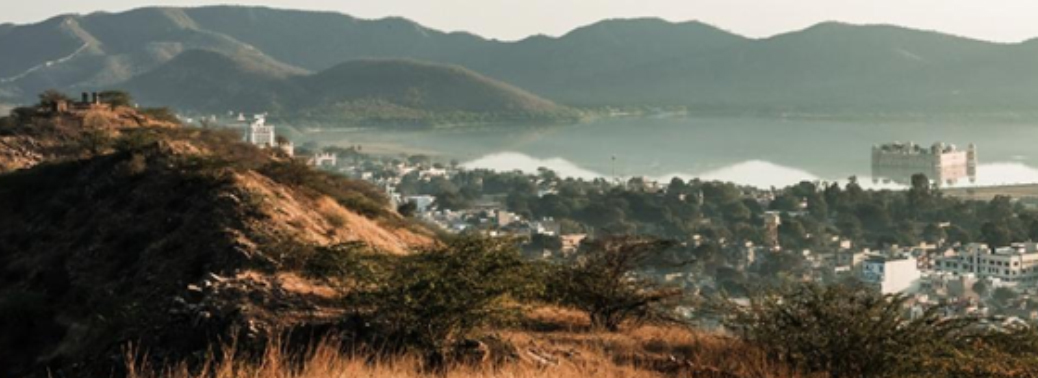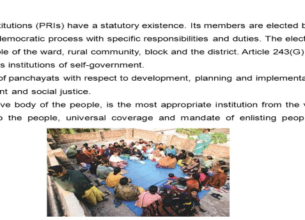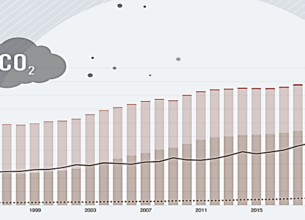INDIA LOST 31% OF GRASSLANDS IN A DECADE
13, Sep 2019

Prelims level : Environment- Ecosystem, Climate Change
Mains level : GS-III- Conservation, Environmental Pollution and Degradation, Environmental Impact Assessment
Context:
- India lost 31 per cent, or 5.65 million hectares (mha), of grassland area in a decade, showed data the Union government presented to the United Nations Convention to Combat Desertification (UNCCD) during the ongoing 14th Conference of Parties (COP).
What is Grassland Ecosystem:
- Grasslands are open areas of land where grasses or grass like plants are the dominant species. Other forms of vegetation such as trees are rare in grasslands because they are not suited to thrive in the grassland’s dry environment.
- Grasslands receive water through rainfall, and when it does occur the grasses use their roots to search for moisture. Grass within this type of environment reproduces by releasing pollen when the winds blow or by producing plants from their roots.
Highlights:
- The total area under grasslands reduced to 12.3 mha from 18 mha between 2005 and 2015. Grasslands in the Aravalli range in Rajasthan underwent severe degradation. Other states where land has been severely destroyed include Maharashtra, Karnataka, Gujarat and Uttar Pradesh.
- The country also lost around 19 per cent of its common lands during the same period, according to the report.
- The area under common lands decreased to 73.02 mha from around 90.5 mha between 2005 and 2015.
What is Common Land?
- Common lands include the grazing grounds, some forest land, ponds, rivers, and other areas that all members of a rural community can access and use.
- They provide food, water, fodder, firewood and livelihood to rural communities, while also helping recharge groundwater and maintain the land’s ecological balance.
- Around 4.74 mha of grazing land was diverted as agricultural land across the country. A lot of common land also met the same fate — 29.11 mha of common land was diverted for croplands in the decade, added the report.
- Industrialisation and conversion of common lands for non-agricultural purposes became a major cause for the decreasing size of common lands.
- Area under cropland saw nearly an 18 per cent increase to 134.5 mha from 113.6 mha.
Productivity
- But even as these lands are being lost to agriculture to feed the growing population, it is worrying to note that their productivity has also declined.
- Productivity of at least 26 mha of land has decreased and of this, close to 0.8 mha was grazing land and 5.9 mha common lands.
Ways in which Grasslands Degrade:
- Loss of grazing land can be attributed to two kinds of drivers — direct and
Direct:
- Overgrazing, poor management and deforestation are the direct drivers.
Indirect:
- conversion of pastures into croplands through encroachment, diversion and allotment driven by Increasing Population pressure are the Indirect Drivers.
Importance of Grasslands:
- Grasslands form unique habitats of several wild species.
- Grasslands are not just important wildlife habitats. They are also reservoirs of crop genes and the backbone of the livelihood of pastoral communities.
- Historically, grasslands have provided many food grains, including rice, wheat and millets, for human beings.
- In times of climate change many agricultural crops may not cope with the changes.
- This gene pool acts as a biodiversity safety net, which can be used for developing more crop varieties.
Concerns of Grasslands Degradation:
- Various species are now pushed to the edge of extinction with the shrinking and degradation of grasslands.
- For instance, grasslands of the arid regions form unique habitats for the blackbuck, a Schedule I species as per the Wildlife Protection Act.
- The Great Indian Bustard, one of the heaviest flying birds, has become critically endangered because of the continuous loss and deterioration of arid and semi-arid grasslands.
- The unique shola grasslands in the high-altitude region of the Western Ghats provide habitats for Nilgiri tahr, an endangered mountain ungulate endemic to the Western Ghats.
- Loss of this habitat is one of the prime causes of its population decline.
- Monocultures of eucalyptus and black wattle in the mid-1980s aggravated the degradation of these rolling grasslands.
- Manipur deer or thamin, Asiatic ibex, Kashmir stag or hangul, Kiang or Tibetan wild ass, Himalayan tahr, Swamp deer or barasingha, Great Indian rhinoceros, hog deer and many more are under stress due to the degradation of grassland ecosystems in different eco-climatic zones, from the coastal regions to the alpine meadows and steppes.
- Pastoral Communities
- Large parts of grasslands have been converted into agricultural land or diverted for other purposes.
- Over the years, changes have crept into the traditional pastoral practices as well.
- The pastoral communities have been replacing small herbivores such as sheep and goats by yak in the Khangchendzonga landscape of Sikkim.
Grasslands in India:
- The most widespread grassland in India is Imperata grasslands.
- The majority of the grass species found in India belong to the tribes Andropogoneae (30%), Paniceae (15%), and Eragrosteae (9%).








